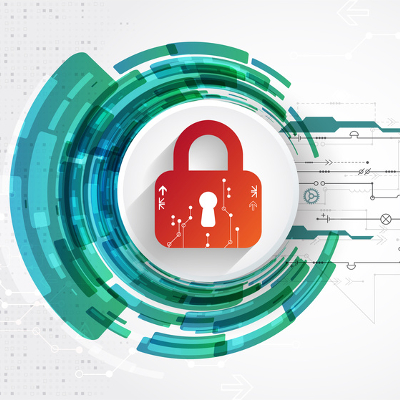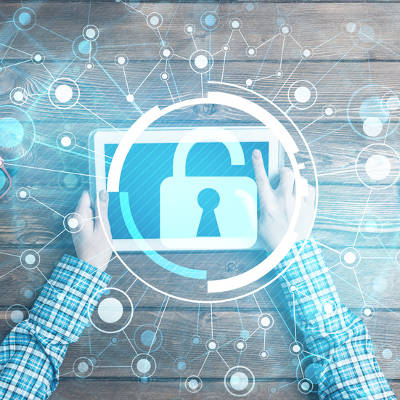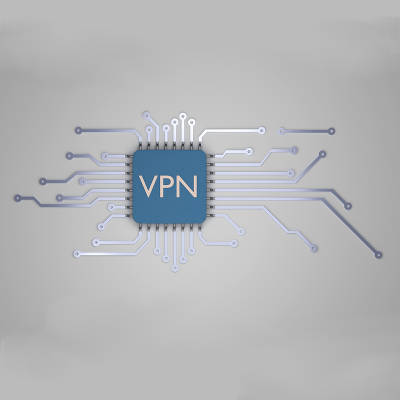Take Advantage of Comprehensive Network Security with UTM

Network security is one thing that rarely stays the same for any business–especially with the ever-changing threat landscape on the Internet. No matter how much time you spend preparing for security troubles, you’ll always be caught unawares if you never assume that the worst will happen. You should be taking advantage of both traditional security solutions, as well as new and emerging tools that help you keep advanced threats at bay.
Regardless of how much your business’ technology grows, there is always going to be the possibility that even some basic threats could cause trouble for your organization. For example, your workstation will be vulnerable to threats like viruses, malware, spam, and many others if you choose to forego traditional protection solutions like an antivirus or firewall. Furthermore, even consumer-grade protections are often not enough to keep more advanced threats at bay.
It’s all a matter of cost. Managed service providers make these services more affordable for small businesses. A Unified Threat Management (UTM) tool is the ideal solution for many SMB security woes. A UTM includes enterprise-class solutions like a firewall and antivirus that keep threats from making an impact against your business, as well as spam protection and content filtering to keep issues out of your infrastructure in the first place. This saves you a considerable amount of time and money, as eliminating threats after the fact can be both wasteful and risky.
There are also other security solutions that you’ll want to consider, namely two-factor authentication and biometrics. Two-factor authentication allows your organization to add a secondary credential to any login portal so that hackers have more trouble accessing sensitive information. An example of a two-factor authentication system is having a code sent to your smart device, which would then be input following your password. Hackers don’t want to do more work than necessary, so if you make accessing your account challenging, they are less likely to pursue the opportunity.
Biometrics make things more complicated for hackers as well. Biometric technology uses your body’s natural identification systems to ensure that only you are accessing your accounts. Scanning your iris or fingerprints are two examples of biometrics that keep hackers from cracking your security protocol. Unless a hacker has a picture-perfect copy of your eyes or fingers, they’ll have a difficult time stealing anything from your accounts.
How does your business keep itself safe from hacking attacks? Regardless, Catalyst Technology Group can help. To learn more, reach out to us at (317) 705-0333.
These Gifts Can Come with Security Issues

The holiday season is coming to a close, with meals shared and gifts opened. You may have even received a new gizmo or doodad that you’re looking forward to trying out. Not to burst your bubble, but there is unfortunately a chance that the gizmo you had hoped to get (or purchased for a loved one) may lead to a security breach.
Smart Home Hubs and Assistants
These devices were touted as useful gadgets to have around the house as a mix between a media center and reference source. The trouble with devices like these is that they are always listening for you to speak, with microphones that automatically activate. Think about everything you say in the privacy of your own home. A cybercriminal could listen in, taking that privacy away and quite possibly learning some invaluable information.
To make this situation worse, many “smart home” devices also have cameras, invading your privacy in yet another way.
Admittedly, the thought of controlling one’s house by telling it what to do is, for lack of a better term, pretty cool. However, the questionable security that many of these devices suffer from gives cybercriminals the unique opportunity to spy on you, whether you use the assistant at home or in the office. This is also important to keep in mind if a young person you know recently received one of these devices.
Smart and Connected Toys
While many connected devices are clearly meant for an older demographic, there is an equal amount that are intended for children. For example, many toys are now capable of functioning in a way quite similar to a smart home hub, and others have features that are outright creepy. For example, if a child has a Toymail Talkie, a cybercriminal could use it to communicate directly to that child. Other connected toys offer cybercriminals with intimate details about the schedule of a child. For instance, the connected bath toy, Edwin the Duck, can be used to tell a hacker the general time that a child is in the bath and when they are put down for the night.
Connected and Smart Appliances
Grown-ups have to have their toys, too. Appliances and accessories with “smart” capabilities are becoming increasingly common, but unfortunately lack the security required to protect them from cyberattack and intrusion. Assorted wearable tech, like fitness trackers, and Internet of Things devices, or any of those devices that aren’t a computer or laptop but still utilize the Internet, are becoming more and more popular. Unfortunately, because their security is sub-par, these devices can easily be leveraged as a part of a botnet, or can also be used to extract data from their surroundings.
DNA Tests
It would seem that there was a sizable push to frame these ancestry testing kits as the perfect holiday gift this year, despite there being host to numerous privacy issues. Consider what you have to provide to the company. By handing over a vial of your spit, you’re giving them the most unique piece of personally identifiable information you possess: your genetic code, also known as your DNA.
This information quickly becomes very valuable once the topic of research is brought up.
When using one of these services, there are plenty of agreements to sign. These agreements will often give the company the leeway to use your genetic data as they please, including selling a digitized version to whomever is willing to pay.
Despite the Genetic Information Nondiscrimination Act of 2008 forbidding the use of genetic information to justify discriminatory acts, like firing someone because they have a predisposition to a medical condition, it isn’t easy to prove this kind of discrimination. After all, an employer could easily find some other reason to terminate someone’s employment–the fact that they were predisposed to a medical condition that would keep them out of work would just be a “coincidence.”
While we hope that your holidays were as bright and cheerful as they should be, we don’t want an unexpected data breach to spoil those memories. For more products that could put your security at risk, check out Mozilla’s handy guide.
Did you have any of these items on your wishlist? Is it worth keeping them around despite the risk to your data security? Leave your thoughts on the matter in the comments section!
Investing in Innovative Network Security a Must

In 2018, enhancing cybersecurity has to be at the top of every business owner’s to-do list. If your business relies on Internet-connected computing at all, you need to invest, and invest wisely in innovative security constructs. Fueled by demand, organizations from around the world have made a point to protect themselves, their data, and their customers’ personal information against some of the most sophisticated threats ever created. They’ve done so in many ways that include utilizing cloud computing, biometric identification and authentication, security analysis, and managed security services.
There is more to it than throwing money and time at the problem. Here is a comprehensive list of some of the ways organizations from around the world have prioritized cybersecurity.
- Education and training – By training your staff on the fundamentals of cybersecurity, you are doing your company, your vendors, and your clients a big favor. They just may take some of what they’ve learned and use it for their own protection. Understanding the risks that are prevalent today, will help your business see tomorrow.
- Prioritize risk management – Making risk management, that is in this context the action of mitigating risk brought by threats that include software vulnerabilities, hacking attacks, and malware, a management-level responsibility makes cybersecurity governance an organizational priority.
- A multi-layered security approach – By tracking the movement of data out of your network, and prioritizing the protection of said data, you also protect the architecture that runs on that network.
- Threat monitoring and sharing – Sharing threat data with vendors, clients, and other entities, can have a positive effect on your organization’s ability to mitigate risk because, by-in-large, those organizations will share the threats they encounter with you.
- Effective breach response – With the use of innovative tools that include enterprise firewalls and spam filters, the moment a breach is reported, a breach response plan will eliminate the danger quickly and quarantine any data that shows any sign of corruption.
- Testing – Routine penetration tests to the network, as well as staff breach awareness tests can go a long way toward limiting your organizational exposure to cyber threats.
Innovative solutions and practices to ward against malware and other threats are essential for today’s business, and can endanger you company if not made a priority. To learn more, reach out to us at (317) 705-0333.
How to Get the Most Out of Your Security Budget

Running a business isn’t cheap, which results in budgets becoming strained under their operational needs. A major contributor to this strain is often the security-focused line items. However, there are a few means and methods to getting the most out of your security budget.
1: Internships
Internships are an excellent opportunity to boost your IT security staff for a time, especially if you’re looking to add a few well-trained hires in the near future. Cooperating with nearby universities and colleges, and their computer science faculty members, can help you bring in talent that you can direct toward your security for a lower cost than a fresh new hire. Work with your Human Resources department to sort out the logistics, and you may find yourself with an effective security staff with customized training before very long; and, after you have seen that they are worth their salaries through the course of the program.
2: Internal Training
When it comes to maintaining your security, your employees are the ones who are in the trenches. They have to be able to identify potential threats and mitigate them effectively, or your business will left vulnerable. To accomplish this, your staff needs to be trained to understand and lean on the industry’s best practices as they go about their days.
Fortunately, there are plenty of resources available online that your staff can read (and watch) for little to no cost. There is plenty that can be learned from reading articles posted on websites, including this one. Encouraging your workforce to read materials like these can give them a basic understanding of what they need to do to keep the business safe. Of course, you can also hold training sessions for employees to practice what they would do, given a hypothetical scenario.
3: Free Tools (But with Caveats)
There are plenty of free resources out there to help you with your security. The biggest one: Google. Possibly the most important part of keeping your company secure is to understand what threats are out there and how they could negatively affect your company’s network security. Keeping up-to-date and informed will help you to make the adjustments to your security plans that you’ll need.
There are also plenty of free security tools available for download, but you should always have an IT professional check them out first, and ideally, implement them for you. Otherwise, you run the risk of willingly (if unknowingly) introducing malware into your network.
4: Automation
Automation has made great strides in recent years, which makes it an even better tool for businesses to leverage. However, it is not something that should be seen as a replacement for your existing security staff. Rather, they should work in tandem. With the rote, run-of-the-mill issues being handled by preconfigured processes, your employees can divert their attention to bigger matters that demand more focus.
5: Outsourcing
This is another excellent way to bring some extra value in for fewer costs, as outsourcing provides you with additional experts at your disposal for a predictable cost. By having your outsourced resources handle the lion’s share of your security needs, your in-house employees can focus on other critical matters, much as they could with automated solutions. It’s no surprise, then, to find out that many outsourced IT providers expertly utilize automation.
Catalyst Technology Group can help you with any of these strategies. Call us at (317) 705-0333 for more information.
Security Should Come In Two Parts

As you run your business, you need to remember a few things. First, your digital security is an incredibly important consideration, as your crucial data could be tampered with or stolen outright. However, you can’t forget the shared importance of your physical security systems and how they will keep your business safe as well.
In today’s blog, we’ll review some of the considerations you need to make to keep your physical security up to par.
Access Control
The first step to keeping your business secure is by restricting who can gain entrance to your physical location, and from there, who can access different areas within it. This is accomplished by requiring some kind of identifier to be provided before access is granted, be it an ID card, a pin code, or even biometric data. Access control allows you to keep your location free of unauthorized individuals, and even lets you monitor the comings and goings of employees to catch any suspicious activity.
Identification – This is the key to access control solutions, as it establishes who you are and thereby what you are permitted to access by requiring some form of identification to enter certain areas. Often, security setups will require multiple forms of identification in order to authenticate your identity. This approach is known as 2FA, or 2-Factor Authentication. You’ve most likely seen this before–for example, if you’ve ever needed to enter a PIN number after providing a password.
Security and Monitoring
Quick–could you identify where everyone is in the building at this very instant, including visitors, clients, and others who have entered? Have you made note of where your visitors are supposed to be during their visit? Your security setup needs to include some means of keeping watch over your business–the most obvious component being security cameras, but your access control solutions can play a role here as well by keeping a record of what was accessed, when, and by whom.
Means of Communication
Communication and security go hand in hand. How else would you find out if your company had experienced a security breach? In order to allow this to happen, you need to provide your employees with numerous, reliable means of reaching out to share updates, alerts, and other need-to-know pieces of info.
Document Security
If someone has made the investments necessary to gain unauthorized access to your business, it’s a safe bet that they intend to turn as large a profit as they can. To do so, they will need to access your documentation, so you should ensure that all access to it is secured and only available to those who have been authorized.
Device Management: Of course, modern technology provides more ways to access data than ever before, which means you need to worry about more than just your company’s workstations. Mobile devices that can be used to access your data should be equipped with remote wiping software, including devices you distribute as well as those used under a Bring Your Own Device policy.
Employee Training
Your employees need to be involved in your security processes. They are the ones on the front lines, so they need to know what they are supposed to do to help preserve the security of your business. You need to make sure that your workforce is aware of–and follows–best practices that help keep your business safe.
Creating a Security-Minded Culture: One of the more effective ways of prioritizing security is to educate your employees about the realities of potential security risks. Make sure they understand the possible ramifications of a data breach, how potential threats can be spotted, and how to avoid falling victim to them. Each one of your employees can either be a benefit to your security, or can undermine it. Establishing a company-wide drive to be the former may just save you at some point.
How to Improve Your Physical Security
Consider what physical threats exist against your business. While you may have to contend with criminals trying to gain access to your business, threats to your physical security extend far beyond just that. You also need to consider the threat that natural events pose, such as extreme weather and the natural disasters that affect your area.
You need to ensure that your business’ key data and documentation is safe from risks of all kinds. A good way to accomplish this is to utilize a cloud solution to keep a secure copy of your data offsite, safely away from your office and the possibility of a disaster or intruder wiping out everything.
Catalyst Technology Group can help you ensure your data remains secure. Call (317) 705-0333 to get started.
.
Data Security Must Be a Priority for Your Organization

After 143 million people had their personal information put at risk in the Equifax data breach, it comes as no surprise that data security is an even hotter topic than usual. As much as you’d like to think that a breach like that would never happen to your business, this is an unrealistic hope that won’t do you any good if the threat of a data breach does come around. It is much better to be prepared.
Here are three means of securing your business through preventative measures.
Make Sure Your Users Are Familiar With Best Practices
You entrust your employees with your entire business, whether you mean to or not. After all, they are most likely to encounter a threat, and as a result are in the most contact with them. Are they prepared enough to carry that responsibility? Do they know how to recognize a phishing attempt, or an email that could potentially contain a nasty bit of ransomware? It is best if you take the time and educate your users on the warning signs of the various threats that are out there. Who knows–it may just be an employee’s vigilance that saves you from a major snafu.
Enforce Password Standards and Require Two-Factor Authentication
Your password is often the only bit of verifiable data that distinguishes you from someone else, from the computer’s perspective. Most password requirements demand that a password has a certain amount of characters, including a least one letter, one number, and occasionally one symbol with both capitalized and lowercase letters. While these passwords are considerably effective against someone trying to deduce your credentials, a brute force attack will likely crack it.
There is also the option of using a passphrase, which is a sentence that takes the place of the password that only you know. Either of these approaches work well, as a hacker will have no idea if you are using one method or the other, let alone which one. Two-factor authentication, or 2FA, is another effective means of securing an account, as it requires a second set of credentials that is delivered directly to you via a mobile device before it will permit access.
Use UTM to Help Defend Your Network
A UTM, or Unified Threat Management, tool is a comprehensive defense against threats of all varieties. Including a spam blocker to protect your inbox, enterprise-level firewalls and antivirus solutions to repel threats, and a content filter to keep your workforce away from risky websites, a UTM makes sure that your business’ bases are covered. In addition to these features, your threat reaction time can become much quicker, allowing you to respond to issues before they cause very much damage.
These three defenses are an effective way to minimize the risk of a data breach. For more best practices for maintaining and protecting your business, keep reading our blog, and reach out to us at (317) 705-0333.
Data Security Must Be a Priority for Your Organization

After 143 million people had their personal information put at risk in the Equifax data breach, it comes as no surprise that data security is an even hotter topic than usual. As much as you’d like to think that a breach like that would never happen to your business, this is an unrealistic hope that won’t do you any good if the threat of a data breach does come around. It is much better to be prepared.
Network Security Needs To Be A Team Effort

Network security is more than just a conscientious attempt by your staff to protect your organization’s digital assets. It’s making sure that your employees know how to handle dangerous situations, implementing preventative IT measures to eliminate potential issues entirely, and having the right technology experts on-hand to handle tough problems that can’t be solved by a few pieces of technology.
To begin, let’s take a look at what role your organization’s IT department plays in the overall security of your business’ infrastructure. We’ll then move on to how the average employee can reinforce network security, and how outsourced help can be beneficial.
Your Internal IT (If Any)
First, the responsibilities of your IT department must be considered. Ordinarily, your IT department would be responsible for tasks such as monitoring your network, installing patches and security updates, and general upkeep of your technology systems. Of course, that assumes that you even have an IT department in the first place, which not a lot of small businesses have. The expense of hiring in-house technicians can add quite a bit of strain to your budget that you may not be able to afford. Or, worse yet, you leave all of the technology-related maintenance to your ordinary employees who have other jobs and responsibilities. This not only takes time away from your business’ busy employees, but also compromises security, as tasks may be rushed or performed wrong entirely.
What Your Employees Can Do
Even if you do have an internal IT department, your employees can practice certain security practices to ensure that they don’t contribute to your business’ troubles. Many issues concerning network security are caused by user error, such as clicking on the wrong link or downloading the wrong attachment. Furthermore, passwords–one of the most critical parts of any security protocol–are often created in such a way that they aren’t secure enough. Passwords should be long and complex, utilizing combinations of both upper and lower-case letters, along with numbers and symbols. They also shouldn’t be the same across the organization, or shared with others. Reinforce that your employees also be wary of any suspicious messages in their inboxes, and advise them to report anything strange or out of place to your IT department.
What You Can Do
Even if you do have an internal IT department, they might be so swamped with work that they don’t have the time to reinforce your network security. On the other hand, if they are dedicated to ensuring the security of your network, they may not have time to deal with the more routine tasks, like assisting with technology troubles or help desk support. Outsourcing your security, as well as general maintenance for your infrastructure, is a great way to assist your internal team with day-to-day responsibilities. Think of it as a way to resolve any bottlenecks that they may be running into, be it a lack of time to properly monitor your network security, or a lack of availability to resolve in-house employee technical difficulties. It’s just one way that outsourced IT solutions can help your business protect itself in the long run.
Does your organization need assistance with IT security? Catalyst Technology Group can help you augment your security capabilities through the use of managed IT services. To learn more about how we can keep your organization secure, reach out to us at (317) 705-0333.
A VPN Allows Productivity Without Sacrificing Security

Security needs to be a priority for everyone involved with business. This has led to a rise in the use of solutions that will protect the security and privacy of the user and their systems. A very common, yet effective, means of securing your data is to use a virtual private network, or VPN.
A VPN is a network that masks your activity through encryption and routes your web traffic through servers located somewhere that you are not. These safeguards allow a user to worry less about having their data stolen in transit. This feature makes VPNs useful to businesses, especially to organizations that have employees that work remotely, on the road, or from multiple locations.
Using a VPN, a worker can remotely access their business’ network without fear of their data being harvested, allowing the worker to maintain their productivity, whether they’re sick and stuck at home or across the world on business. Some VPNs can even maintain a virtual desktop, allowing a worker to access their workstation remotely and use it just as though they were in the office.
In a world where everything seems to happen online, it is more important than ever to protect your business against cybercrime. Criminals have been quick to embrace technology and use it to their advantage.
Let’s consider a quick scenario: you’re on a business trip, staying the night in a chain hotel. At your free continental breakfast, you decide to get some work done on your laptop. You could potentially be at risk of cyberattack the moment you connect the device to the hotel’s Wi-Fi, and unlike other crimes, the cybercriminal doesn’t even have to be there to participate. They could be sitting in a diner down the street or at their 9-to-5 job on the other side of town, letting a planted device to their dirty work for them.
It is unnerving to think of how much someone can learn about you based on data they intercept. A journalist was able to take data from a completely ‘smart’ apartment in Bucharest and write a story about the resident of that apartment based off a week’s worth of data. The fictional story was almost completely accurate to the resident, even though the writer had never met him. Imagine the damage that a cyber criminal could do with that amount of comprehensive data.
For reasons like these, it is all the more important that you leverage a VPN for your business’ protection.
VPNs are also commonly used to sneak past geographic restrictions on certain websites, which has led to some countries banning them outright. China, for example, has made the use of VPNs illegal after they were used to undermine the Great Firewall, allowing citizens to view content that was censored by the government. Russia has followed a similar route, with Iran, Iraq, Turkey, and Venezuela all considering following suit. These laws make it considerably more difficult for many businesses to ensure their security, as these countries may find out sooner or later.
As for your business, a VPN is a tool that you should implement to better ensure your data security. Catalyst Technology Group can help you get one set up, just give us a call at (317) 705-0333.
The Good, the Bad and the Risky: Current State of IT Security for SMBs

Technology has revolutionized business. However, along with all the advantages and benefits technology affords us, it comes with a few risks and vulnerabilities that some businesses are still struggling to come to terms with. For example, storing records electronically makes them easier to organize and locate when they’re needed. It also makes them vulnerable to hacker and cyber-attacks. Still, most SMBs are working toward mitigating risks as opposed to abandoning the use of technology in their business operations – and a current assessment of the situation does show improvement over past years.
The following seven statistics examine the current state of IT security for SMBs, as well as why these numbers should be of importance to you and your business.
- Only 36 percent of organizations report being fully aware of employee activity on their network.
From terminated employees with continued access to your network to current employees spending the day on social media instead of working and even to Internet of Things devices connecting without knowledge or permission of a company, there are all types of unauthorized access that a business network has to be aware of. This study is saying that only 1/3 of companies have an idea of what is happening on their network. When it comes to network access, what you don’t know can hurt you – and cost your company money! - The percentage of businesses that that have at least some control over employee activity on their network grew from 62 percent in 2016 to 85 percent in 2017.
This statistic is one of the few significant positive changes that is highlighted in this business IT risk report. SMBs are finally starting to recognize the importance of access control when it comes to IT security. The truth is, many major security breaches are caused by human error (some of it intentional) from employees who access a network or parts of a network outside of their job with malicious intent. - 65 percent of respondents admitted to having security incidents in 2016; the most common reasons cited were malware and human errors.
SMBs are being targeted regularly by cyber criminals. Many of these respondents have failed to take the proper network security measures, despite a security incident. Historically, many SMBs are involved in a full-scale cyber-attack and experience loss before they fully enact and enforce network security. - 48 percent of organizations that have to comply with any cyber security standard still struggle to ensure continuous compliance and provide complete evidence of it to auditors.
Certain industries require SMBs to comply with cyber security standards and regulations, regardless of their size and network security experience. Moving forward, it will be more and more common for the entries requiring compliance to request proof of compliance, including policy implementation and compliance audits. For SMBs who can’t meet these compliances, it is recommended that they contact a third party, like Catalyst Technology Group for guidance. - 79 percent of respondents say that detecting and mitigating human errors, both malicious or accidental is critical for reducing IT risks.
The secret is out. Sometimes, humans make mistakes. Other times, they are just up to no-good. For example, malware may ravage a network as a result of an employee that accidently clicks on an attachment in their email. SMBs have started to acknowledge the element of risk generated on a regular base by humans. Businesses next need to take measures to mitigate the human threat with proper training of best practices, ensuring they take situationally-appropriate network security measures, and regularly update these measures to keep up with threats and risks.
These are just five of the many items that Netwrix Risk Report can tell SMBs about all of the threats that they are facing every day. For those of you who don’t have time to read IT risk reports, a partnership with Catalyst Technology Group will go a long way toward making your network and data safe – against all types of threats, including the human element.

